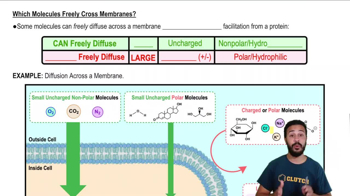Multiple Choice
The vessels that exhibit the lowest level of permeability are the __________.
73
views
 Verified step by step guidance
Verified step by step guidance Verified video answer for a similar problem:
Verified video answer for a similar problem:



 6:49m
6:49mMaster Biological Membranes with a bite sized video explanation from Bruce Bryan
Start learning